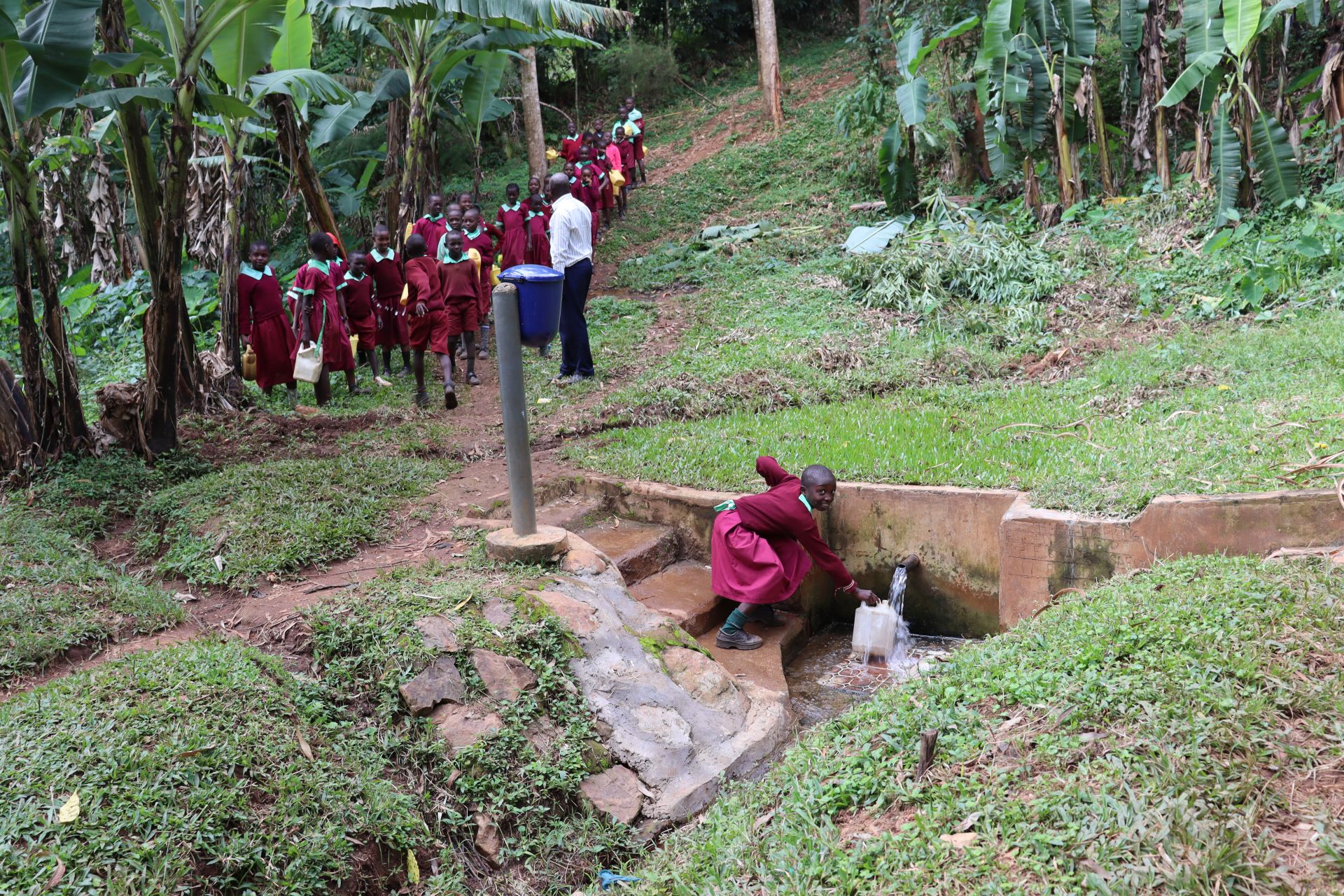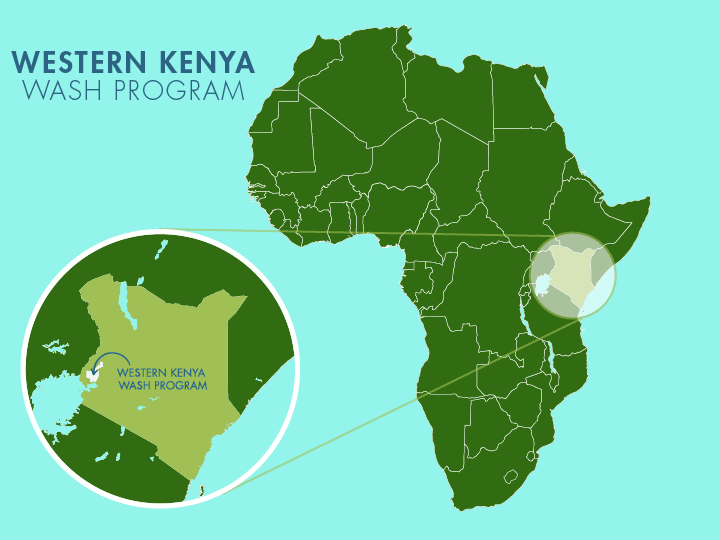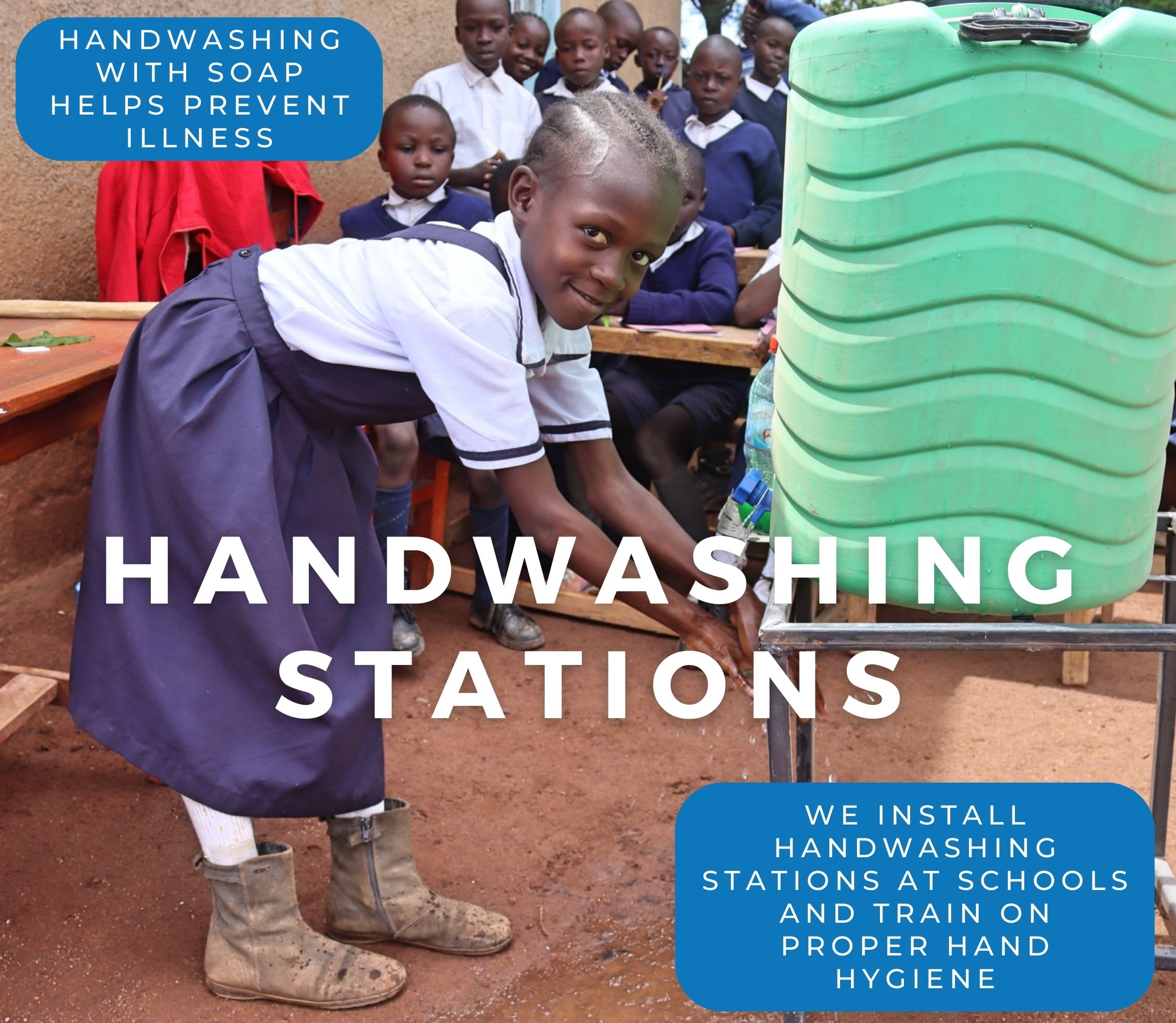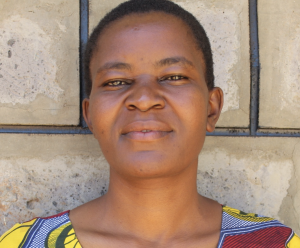For the past five years, the St. Vincent Hirumbi Primary School, with 572 students and 29 staff members, and its surrounding community, have struggled without a dependable water source. They have access to two water sources: an overcrowded spring and a rainwater collection system, both of which are inadequate and potentially dangerous.

For students to collect water from a community spring, a 30-minute walk away, but pupils must cross a busy road without supervision, risking accidents, and then navigate steep, slippery terrain to reach the water point.

The other water source, a 5,000-liter rainwater tank, is insufficient to meet the entire school's needs. It only provides limited water during certain seasons and runs dry quickly due to the large number of students collecting from it, as well as the school's various needs for drinking, cooking, and cleaning.

Neither source is safe, and at times, can be contaminated. The school has reported numerous cases of typhoid and water-related symptoms such as abdominal pain, diarrhea, and fever because of the poor water quality.
Fetching water disrupts learning. Teachers report that this has negatively affected both teaching schedules and academic performance.
"Sometime back, some students felt unwell. It was challenging at first because the signs and symptoms that the students were showing resembled those of malaria. It costs a lot [to] diagnose the same in a nearby health center. Water-related illnesses have caused repeated cases of absenteeism among the pupils, [with] most of them claiming they went for further treatment," shared Mr. Patrick Kangayia, a 45-year-old teacher at the school.

But illness is not the only threat Mr. Kangayla perceives. He knows that for students, collecting water from the community spring is a challenging task.
"My pupils have been harassed severely by the community members, forcing them to wait for them to fetch water first. [I] am concerned because when a pupil stumbles and falls, I'll be the one to be blamed by the parent for not being responsible. Due to its scarcity, students [are] forced to scramble for the [little] water they are provided with, where unwanted fights might erupt, forcing the staff to use extra energy controlling them," said Mr. Kangayla.
We plan to change the students' future by implementing a new water source. A new water point will provide students with sufficient and safe water right on their school campus, creating a brighter future and reducing the risks they have to encounter every day.

Installing a safe, reliable water source would be transformational. It would ensure students’ safety, reduce absenteeism, and create more time for teaching and learning. Water is not just a necessity but the foundation for a safe, healthy, and thriving learning environment.
"Accessible, safe water will guarantee them a humble stay in their classrooms, where teachers will now focus on the students' weak points that will later generate good grades," said Mr. Kangayla.
Steps Toward a Solution
Schools without reliable, on-premises water access often rely on students to fetch and carry water, leading to rationing and uncertainty about water quality. The water is typically poured into a communal storage tank and used by the entire school. With children carrying water from all different sources, it is also impossible for teachers and staff to know exactly where the water comes from and how safe it is to drink.
A new water point will be located on-premises at the school to ensure accessibility, reliability, and safety for students, teachers, and staff while meeting our school coverage goals. Having water available at the school allows children to drink, wash hands, and use sanitation facilities without leaving school grounds, preventing disruptions to lessons and reducing safety risks. A dedicated source increases water availability, reduces reliance on stored water, minimizes rationing, and ensures confidence in the safety of the water. This means staff and students are healthier, and their lessons aren’t disrupted, contributing to a better education!
Our technical experts worked with the school leadership and local community to identify the most effective solution to their water crisis. They decided to drill a borehole well, construct a platform for the well, and attach a hand pump.
Well
Abundant water often lies just beneath our feet. Aquifers—natural underground rivers—flow through layers of sediment and rock, offering a constant supply of safe water. A borehole well is drilled deep into the earth to access this naturally filtered and protected water. We penetrate meters, sometimes even hundreds of meters, of soil, silt, rock, and more to reach the water underground. Once found, we construct a platform for the well and attach a hand pump. The community gains a safe, enclosed water source capable of providing approximately five gallons of water per minute.
Our proposed water point can only serve 300 people per day. We hope to continue working with this community to identify other water solutions that will ensure all the people in this community have access to safe and reliable drinking water.
Handwashing Stations
Alongside each water source, we install two gravity-fed handwashing stations, enabling everyone at the school to wash their hands. Handwashing is crucial for preventing water-related illnesses within the school and community. Student “health clubs” maintain the stations, fill them with water, and supply them with soap, which we often teach them how to make.
Latrines
We will construct two Ventilated Improved Pit (VIP) latrine blocks designed to prevent fecal disease transmission. Each latrine features a cement floor, making it easy to use and clean regularly. Three stalls will serve the girls, and three will serve the boys.
School Education & Ownership
Hygiene and sanitation training are integral to our water projects. Training is tailored to each school's specific needs and includes key topics such as proper water handling, improved hygiene practices, disease transmission prevention, and care of the new water point.
To ensure a lasting impact, we support forming a student health club composed of elected student representatives and a teacher. These clubs promote hygiene practices schoolwide and keep handwashing stations well-stocked. This student-led model encourages a sense of ownership and responsibility.
Safe water and improved hygiene habits foster a healthier future for everyone in the school and the surrounding community.

 Borehole Well and Hand Pump
Borehole Well and Hand Pump
 Rehabilitation Project
Rehabilitation Project




















